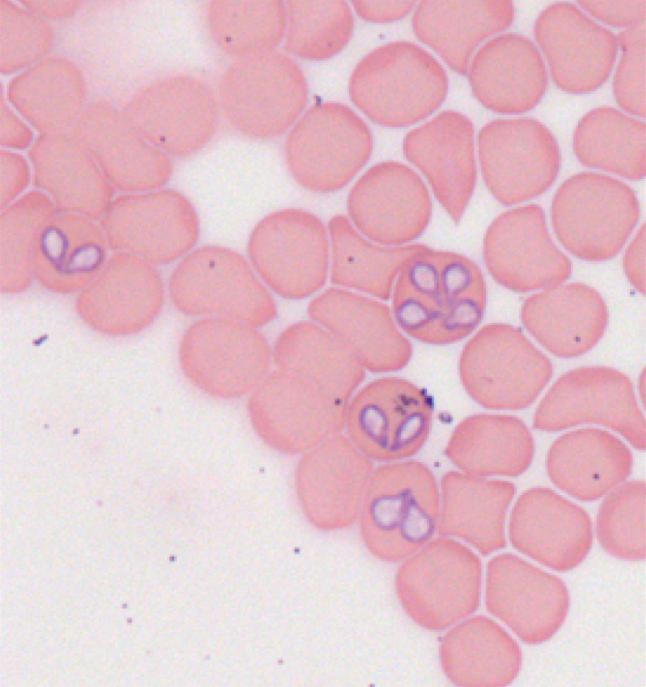Canine Infectious Diseases: Self-Assessment Color Review, Q&A 11
| This question was provided by CRC Press. See more case-based flashcards |

|
Student tip: This case is a good example of a blood smear |
Case 11 is the same dog as in Case 10. The dog had a hematocrit of 0.15 l/l. A blood smear was obtained (see image). The dog (10 kg) needed a blood transfusion, but no stored blood was available. However, the owner offered to bring in a 5-year-old Rottweiler (50 kg), which belonged to the son of the owner, as a blood donor. This dog was healthy, completely vaccinated, and received preventive treatment for parasites regularly.
| Question | Answer | Article | |
| What is your diagnosis? | The diagnosis is hemolytic anemia due to infection with a large Babesia species (most likely Babesia canis).
|
Link to Article | |
| What factors have to be addressed and kept in mind before and during a blood transfusion? | The donor dog should be healthy, test negative for blood parasites, be properly vaccinated, and should receive parasite prevention (especially for fleas and ticks) regularly. The hematocrit of the donor should be determined. The donor should ideally have the same blood group as the recipient. If the blood group is different or no blood typing is available, a cross-match of donor and recipient blood should be performed. The donor can donate up to 15 ml/kg blood (750 ml for this donor). The recipient’s hematocrit will increase by 0.01 l/l for each 2 ml/kg of whole blood transfused. Therefore, about 300 ml of whole blood are needed to increase the recipient’s hematocrit to 0.3 l/l. Blood should be collected into a sterile bag that contains anticoagulant (e.g. 1 ml sodium citrate to 9 ml blood). Blood should be administered using a transfusion set that includes blood filters, over a period of 4–6 hours. As transfusion reactions can occur, regular monitoring of the transfusion is mandatory. Following transfusion, the hematocrit should be re-evaluated.
|
Link to Article | |
To purchase the full text with your 20% discount, go to the CRC Press Veterinary website and use code VET18.
